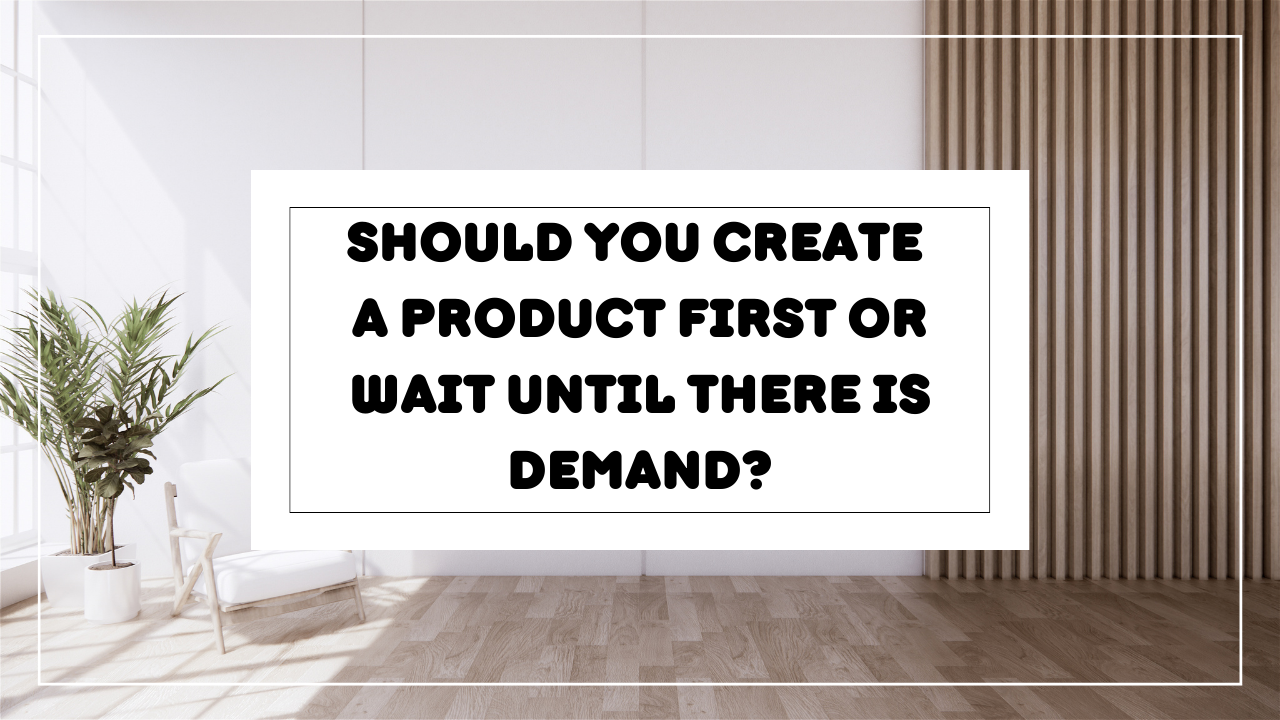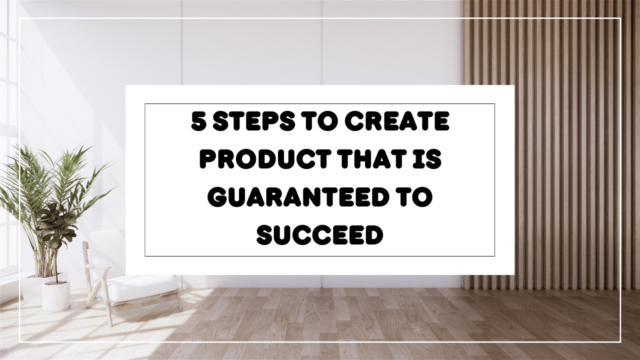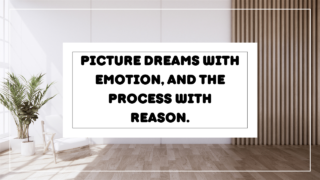Some people hesitate to take action because they are too focused on monetization.
“What if the product I create is actually not attractive so I make no sale and I feel the time I spent to create the product, the efforts I have put into it is wasted? But I know for sure I won’t see any result if I take no action, so what should I do?”
I can very much relate to these thoughts because I went through the same experience before.
This article is for those people, discussing whether to create a product first or wait until there is demand from people.
So first of all, if you can create a product without risk, it’s okay to create it first assuming you can easily prepare a product using an online platform such as mediums, podcasts, or whatever media platform you can use to expose your product to an audience, OR, if you have a customer database, just create it and test it to see if it can create traction.
Also, if you have created the product before and you can repurpose it with different wrapping around it, that is fine too since you don’t have to create it from scratch which means the risk is quite low.
However, if you create a product based on reverse calculation for something you will do in the future, there is a risk that it will not sell.
In that scenario, I would suggest you wait until you can confirm there is demand particularly if it takes time and money to create a product and you feel a sense of risk.
Develop the relationship with the audience first that is strong enough so that you can ask them what they are struggling with which prompts you to think about the potential solution for them because the conversation can be transformed into a transaction.
Once you know what they are struggling with, you want to look inside your toolbox, and resources to see if you can create a solution for the problem your audience is facing, but unable to resolve. You might find a particular tool or combination of the tool you are equipped with that will help you craft the product as a solution for the audience. You feel the tool available from your toolbox is not good enough for making a product.
But I want you to understand that by this time, you earned the right to proceed to this step because it is confirmed that there is a demand by the audience “Can you help me?”, “Do you offer consultation?”, “Do you have any products?” So it is not a matter of “IF we can get to know their problem”, but rather it is “HOW can we solve their problem”
In my case, these are all comments and inquiries that have been shared with me during the development of Kesae Total Balance, an Alignment massage salon where I work as Chief Marketing Officer.
At that time, the business has been operating for more than 15 years, but the female owner, who is now my business partner and CEO of Kesae Total Balance, had been only targeting Japanese customers because she didn’t think she can provide her service to English speaking customers due to her lack of confidence in her English ability.
Because of the small population of the market, you can easily imagine the struggle she had been in with her business. In fact, not only the market cap she is trying to maximise, but she also has no clue about online marketing and so on which does not help at all.
That is when I came in jumpping on board to help herself out to align her business with her vision she wants to achieve. There are a lots of episode and backstory I can tell to articulate what had to be done for her business to come back on track, but one thing I and she are confident about is the quality of her massage skill that has been practiced and harnessed for the last 15 years.
And I learnt that most of her customers are now her repeat customers which is the evidence of her quality that her massage exhibits. So I figured out she does not need to change her practice, but the wrapping around her practice need to be aligned so that her business will be well receieved and it will stay afloat in the market.
Wrapping here refers to the messaging, menu, pricing, communication that are the integral part of developing the integral relationship with customers and only way I can find out the optimum form for all those parts is guessing and testing.
Because there is no risk to change the wrapping around her practice, we immediately crafted our new messaging, menu, pricing and so on and launched it in the market.
After launching it, we can see some part not aligned with what we want to achieve, so we tweaked around and test it again until we feel all aligned to achieve the future we want to see in reality.
Of course, it is not like once you are done, you can forget it. We consistently and continuously monitor our performance based on the number of inquiries and the number of bookings as well as retention rate as such, but it only requires adjustment once the foundation is laid out.
So in our case, the audience who are in a relationship with us now has been waiting for the product we launched. Our example illustrates how important it is to reach out to your potential audience and figure out the way to develop the integral relationship with them.
Some people are wanting to move to the stage of monetization too soon. What can you do if you don’t know how to deliver value to your audience? What kind of action can you take if you don’t know the sweet spot of your audience? So it’s essential to identify where you are at in the process of developing product in order for you to give yourself permission slips to decide what action to take.
Don’t get prioritization wrong. Relationship always comes first and transaction follows suit if you have the integral relationship with your audience.
I understand some people may think, “If I don’t have a product when someone asks for help, obviously, there is nothing I can provide so I literally lose the opportunity to make money”
I know where you are coming from and you are right in one sense. But again, remember, who would want to come asking for help from you if there is no relationship between you and your audience in the first place?
So to kick off the relationship, I think it’s okay to start with something even free. Deliver it for free and collect feedback in return as “customer feedback.”
And this process of getting feedback from audience even if you have to give away your draft product is so beneficial because the initial stage of product development is guaranteed to bumps and hole. Because they agree to walk the path we prepare for them for free, they don’t mind even if the product is not in the best shape since they knew that.
Therefore, it is important to deliberately do it for free or at a low cost, so that you can “keep the relationship” with the customer even if the product didn’t deliver the result as expected.
Of course, as we are working hard to create a product right from the beginning, the customer will feel grateful and appreciate our attitude towards product, and the relationship with us if we move based on the “help” request.
So what is important here is to start by taking on free projects and then charging them at a paid level.
In summary, if you have a product, that’s fine. Be clear on what you deliver so that you can promise your potential customer exactly what they are getting from your product and you don’t disappoint them.
The relationship gets cemented by delivering the product as a solution for customers’ challenges when they solve the issues with your product. Trust that will stack up in the process of using your product is the door to the next success too.
Also, it’s better to create a product first If there is no risk. However, there is a case where products created in advance do not sell because what you create does not feel attractive enough to get picked up.
In this case, create product and deliver it for free to get the success story in return as evidence to show the credibility of the product.
And exhibit these results using a different kinds of platform for them to be seen by people out there. That prompts people to reach out to you asking “Can you help?” or “Do you offer consultation?”
Focus on developing a relationship with your audience you engage no matter how the world is evolving and changing, the integrity you show in the process of developing relationship will stay powerful.






